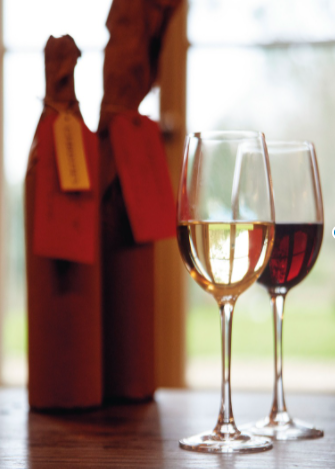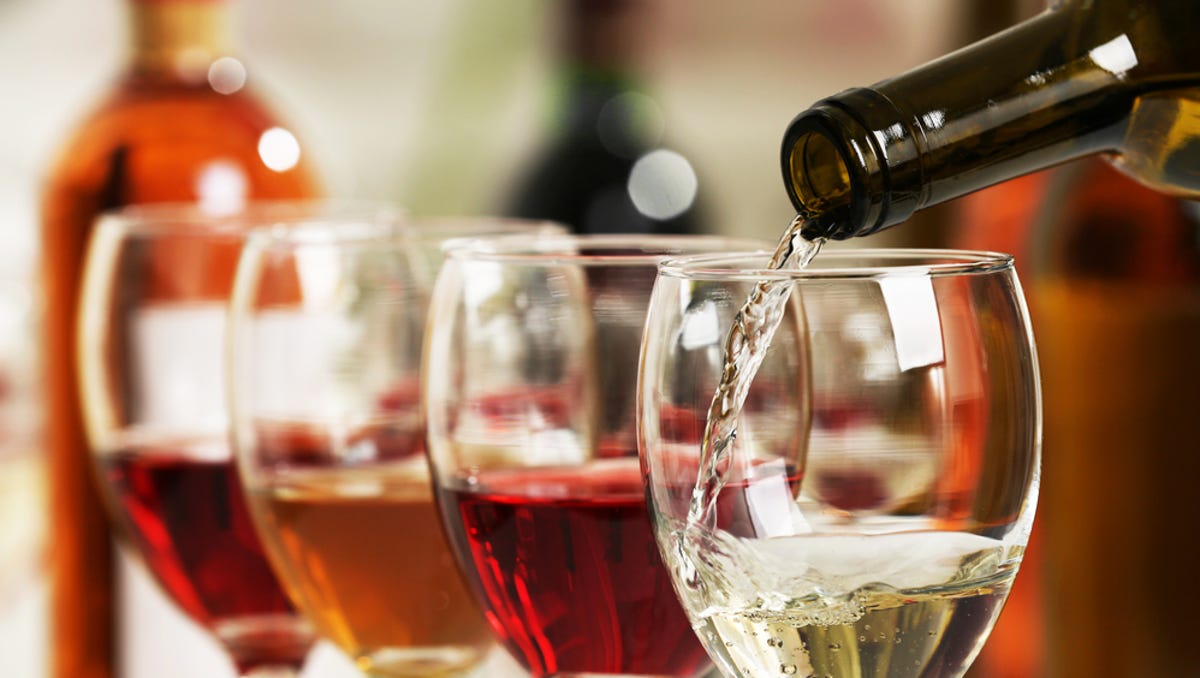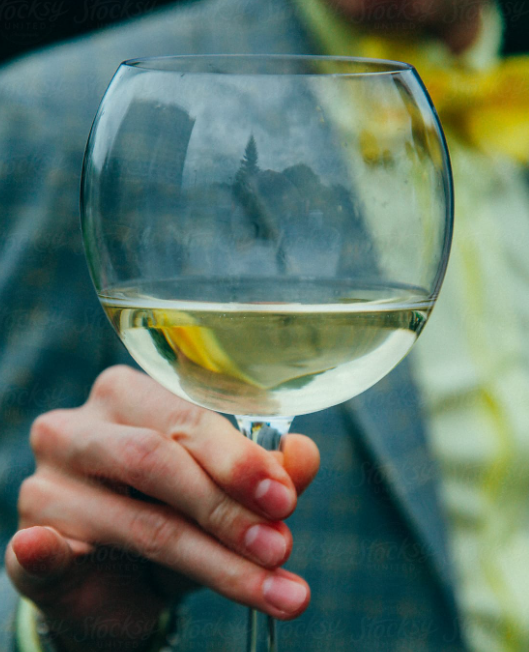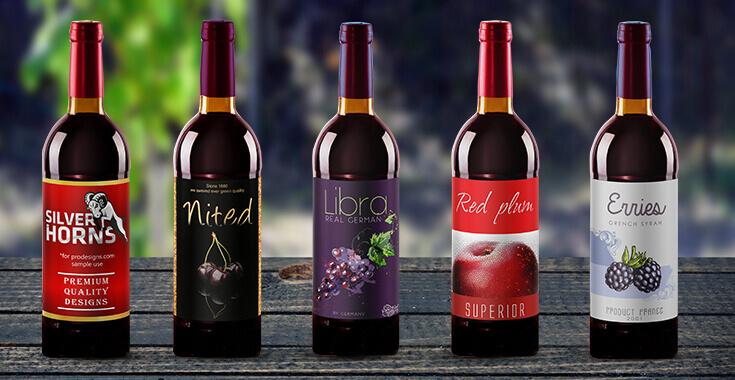Table of Contents
The tasting begins with the eyes. A first glance offers us initial information about the possible characteristics of the wine.
From Wine Design, a ’boutique’ winery specializing in the creation of experiences around wine, they do not teach the wide range of parameters that can be analyzed with the eye to draw a series of conclusions.

The color offers first information on the characteristics of the wine, but given the subjective nature of the human being, the appreciation may vary from one individual to another, which is why it is necessary to define some concepts that unify the knowledge of wine.
To assess the color it is necessary to take into consideration the following aspects: tonality, intensity, and vivacity.

The tonality or hue is the joint chromatic impression produced by the trend of the colors present. In wines, it is possible to define numerous tonalities of red and white that depend on the coloring substances present in them, their evolution during aging, and the pH.
The main terms to define the tones are:
- For white wines: light green, straw, golden yellow, and amber.
- For rosé wines: salmon pink, raspberry, currant, and claret.
- For red wines: purplish red, purple, ruby, garnet, and tile.
The intensity is the force with which the light is transmitted. The intensity is linked to various factors: the vine, the nature of the terrain, the degree of maturity of the grape, and the winemaking system. The main terms applied are: pale, light, weak, intense, dark, dense, and strong.
The vividness or brightness is defined as the ability to disseminate, receive, and radiate light. It is linked to the degree of acidity of the wine: the richer in stable acids the wine is, the more vivid its color will be.
There is a relationship between these color aspects and the other organoleptic characteristics. The tonality denotes the evolutionary phase of the wine: the bright red announces freshness, youth; on the contrary, orange indicates a certain degree of aging. In white wines, darkening indicates a certain degree of oxidation.
The vivacity of the color can provide indications of acidity: vivid straw yellow or purple-red characterize wines rich in acidity.
There is also a relationship between the intensity of the colors and the aroma, not to mention the structure of the wine. “Light” wines tend to have subtle aromas, often floral and fruity, and a subtle “body”; “dark” wines have a stronger aroma and generally a richer structure.
Clarity

A wine is said to be limpid when it is transparent. It is very rare to come across an opalescent, veiled, or cloudy wine. The wines, before being bottled, are subjected to filtering and a series of stabilizing treatments, precisely to avoid the presence of substances in suspension that could alter their clarity.
Wine is called “cloudy” or “veiled” when it permanently presents suspended particles and the suspended substances do not precipitate; when the substances in question are compounds naturally present in wine (tartrates, that is, salts of tartaric acid) which, under certain circumstances (a significant drop in temperature over time), can crystallize and settle at the bottom of the wine. bottle, it is said that the wine has “lees”, as we will see below.
Transparency
Transparency has nothing to do with clarity, in fact, it can be defined as the property of a liquid to allow itself to be penetrated by light rays. The transparency depends on the amount of coloring matter present in the wine. The maximum transparency will therefore occur in wines that are poor in coloring matter, that is to say, whites, while it will be reduced in wines very rich in coloring matter, the reds.
Fluidity and consistency

During the gustatory examination, this characteristic will also be taken into consideration through tactile sensitivity, although for now, we will assess it with our eyes.
We can get an idea of the fluidity of wine by observing it carefully while it is served or by printing a rotating movement on the glass so that the liquid is distributed along the walls of the glass. as we turn the wine in the glass, we can see its body with the naked eye.
Next, with the glass still, we will check the formation on the surface of the wine of “tears” also called “legs”. Its appearance is essentially due to the percentage of alcohol and the surface tension between the three elements: water, alcohol, and glass.
Tears will be less if the ethanol-glycerol ratio decays in favor of the former; broader, in the case that the ethanol-glycerol ratio decants in favor of the second. Both are due to the evaporation of the alcohol, which creates a surface tension greater than that of the underlying wine in the “film” attached to the glass. In a fortified or sweet wine, this viscosity is also reinforced by the presence of sugars.
Effervescence
It is due to carbon dioxide (CO2) dissolved in the wine, which, when released during pouring, produces more or less abundant foam and the formation of more or less large and numerous bubbles.
It is the main characteristic of sparkling wines obtained using the classical procedure (Champenoise method) and the Charmat method, in addition to sparkling wines. The bubbles must be small and homogeneous
Overtime
With age, the color of white wines darkens and they can turn brown, which indicates that they have entered a phase of decline, losing all their fruitiness and freshness. Wines with higher natural acidity have a longer life and can be kept in perfect condition for years.
In reds, the decrepitude produced by age is manifested in a loss of chromatic intensity, to the point of adopting a brownish hue and an onion-skin color rim that can even become transparent.

Other aspects of color
On a white, the paleness indicates that it is a very young wine, which has not taken long to be bottled and consequently has not received aging. The meniscus in these wines is usually almost colorless. If, on the other hand, the white wine is aged on lees or in wooden barrels, the resulting color will be a more intense yellow and a golden rim.
If a red wine has a low color intensity, it may be a sign that it comes from a cold climate. The deeper tones, this is also valid for whites, usually indicate that the wine has been made in a region with a warmer climate. In some cases, the type of grape used must be taken into account, because there are varieties with a less or greater chromatic load.
Deposits
There are two types of deposits, or lees, that can form in wine, and although both are totally harmless (they are not toxic), the visual effect can be very unsightly, especially in those people who are not initiated into the world of wine.
Tartrates are totally harmless white crystals, made up of tartaric acid. The method of making whites in wineries makes it quite rare today to find them in a bottle.
In reds that have spent many years in the bottle, dark deposits usually form, a mixture of tannins and coloring substances, which give the wine a cloudy and muddy appearance, and can even give the wine a bitter taste, so in these, In case it is recommended to leave them in the bottle.
There is a third type of deposits that are produced by the winemaking method in non-filtered wines, a less common and highly recommended practice.
To prevent sludge from forming, it is important to keep the bottle at a constant temperature (the optimum is around 12-14 ° C) and protected from light.




